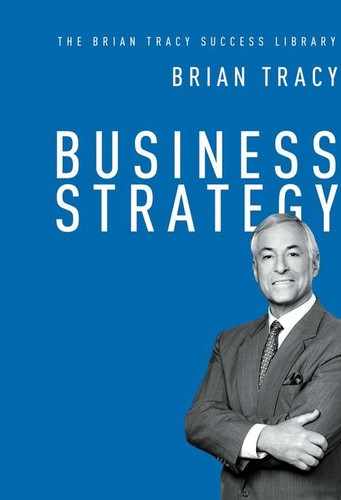The Key Players in Setting Strategy
One of the first questions I’m asked whenever I’m organizing a strategic planning session for a company is, “Who should attend?”
The simplest answer is that everyone who will be responsible for implementing the strategy should be involved in the process of setting the strategy in the first place.
It is essential that the CEO, the CFO, the chairman, or whoever will be ultimately responsible for the implementation of the strategy be in attendance the entire time. This is the person who must sign off on the strategy, give his or her approval to the strategy, and make the final decisions necessary to allocate time, people, and resources to the implementation of the strategy.
Some time ago, I conducted a three-day strategic planning session for a large oil company. The president of the company sat in and attended every minute of that three-day process. He carefully listened to what everyone had to say and offered his observations and comments as the days passed.
By the end of the three days, there was cohesion and a commitment of all the people around the table to the company, to each other, and to the success of the strategic plan that they had mutually developed. The company has since gone on to become one of the largest and most profitable companies in the world.
A Failure of Leadership
In another situation, the president of a billion-dollar company brought me in to conduct a strategic planning session. However, the chairman, who was a descendent of the founding family and who had the power to agree or disagree with anything the executives came up with, refused to attend the session. He didn’t think it was a good use of his time.
During an intensive and enjoyable three-day stay at a resort, we developed a strategic plan for this large national company that was quite excellent. The implementation of this plan would give this company a competitive advantage in a challenging marketplace. Everyone in the strategic planning session was excited about the plan and committed to making it a reality.
Lack of Support
But afterward, when the company president explained the new plan to the chairman, the person with the final authority to approve or disapprove of the plan, he dismissed it as being “largely a waste of time.” He told the president that he was quite capable of making all the strategic decisions necessary for the future of this national corporation. When word of his reaction got out, all the enthusiasm toward the implementation of this strategic plan died away, like the air being let out of a balloon. The company went back to “doing the same old things in the same old way.”
A few years later, this dynamic company—highly admired and respected by its customers and competitors—foundered in the sea of vigorous competition and eventually went bankrupt.
Who Will Implement the Plan?
The next group of people who need to be involved in strategic planning are the implementers of the strategy. They are the key players whose cooperation and involvement will be required. They are usually the senior executives of the organization, the people in charge of the major departments and functions. The more involved they are in the setting of the strategy, the more likely it is that the strategy will be implemented effectively.
There is a simple rule in human interaction: There is a direct relationship between the amount of time that people spend discussing and asking questions about a course of action and their degree of commitment to carrying out whatever decisions are made. The more you talk about a course of action, encourage input, ask and answer questions, and stimulate discussion, the more dedicated each person will be to making the strategy a success.
Strategic planning is something you cannot do by yourself. It’s like dentistry or medical work or the law. You have to get someone who is objective, who has knowledge and exposure to different industries, and who has studied in and is experienced in strategic planning.
You need someone who can come in and be a facilitator of the strategic planning process. This person will take the time to fully understand your company, your people, your markets, your competition, and the situation you are facing in your business today. As they say, “A person who acts as his own lawyer has a fool for a client.”
A person who tries to be his own strategic planner probably has a fool for a client as well.
Even I use an outside strategic planner when I am doing strategic planning for my own business.
Create the Right Environment
A good strategic planning exercise requires two to four days of committed, unbroken time. It is best done in a “place apart,” where there are no interruptions and where people can completely change their mental space.
One of the best places is a resort away from the city, where there are no distractions. The quality of the thinking and the contributions of each person will be in direct proportion to the amount of time that the executives present can focus and concentrate on the future of the business.
